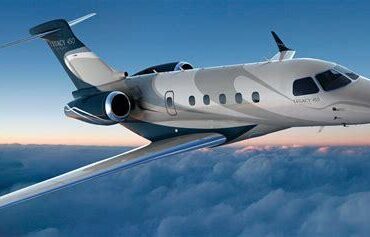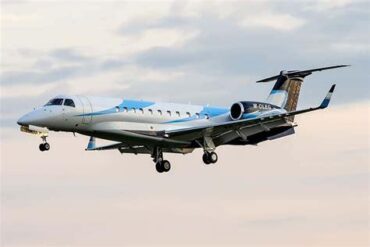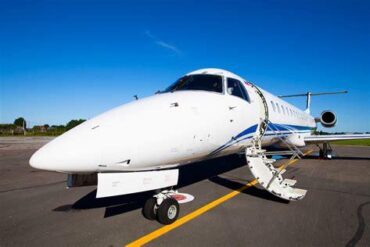The Embraer Legacy 500 is a remarkable business jet that combines cutting-edge technology, luxurious comfort, and impressive performance. As organizations and individuals increasingly seek efficient travel solutions, understanding the price and operating costs associated with the Legacy 500 becomes essential for informed decision-making. This article delves deep into the various factors influencing the cost of ownership, including acquisition price, maintenance expenses, fuel consumption, and other operational considerations.
Overview of the Embraer Legacy 500
Before diving into the financial aspects, it is crucial to understand what makes the Legacy 500 a standout option in the competitive world of business aviation. Designed to accommodate up to 12 passengers, this aircraft features a spacious cabin that rivals larger jets, all while maintaining impressive speed and range capabilities. Its advanced avionics and flight control systems enhance safety and operational efficiency, making it a preferred choice for both corporate and private users.
Key Specifications
-
Passenger Capacity: Up to 12 (typical configuration for 8)
-
Maximum Range: Approximately 3,125 nautical miles (5,787 km)
-
Cruising Speed: Mach 0.83
-
Cabin Height: 6 feet (1.83 m)
-
Cabin Width: 6 feet 10 inches (2.08 m)
-
Cabin Length: 25 feet 3 inches (7.7 m)
These specifications highlight the Legacy 500‘s versatility, making it suitable for both short and long-haul flights.
Acquisition Price of the Embraer Legacy 500
When considering the purchase price, the Embraer Legacy 500 is positioned within the mid-size jet market. As of the latest data, the acquisition price ranges from $16 million to $20 million, depending on factors such as year of manufacture, condition, and customization options.
Factors Influencing Purchase Price
-
Age and Condition: Newer models command higher prices, while pre-owned jets can be significantly less expensive, depending on their maintenance history and overall condition.
-
Customization: Buyers often opt for tailored interiors, upgraded avionics, and additional features that can drive up the purchase price.
-
Market Demand: Like any other luxury item, the price of the Legacy 500 can fluctuate based on market trends and demand for mid-size jets.
-
Location: Prices may vary by region due to local taxes, import duties, and market conditions.
Understanding these variables is crucial for potential buyers aiming to negotiate the best possible deal.
Operating Costs Breakdown
Once the Legacy 500 is acquired, ongoing operating costs become a significant consideration. These costs can be categorized into several key areas:
1. Fuel Costs
Fuel is one of the most substantial recurring expenses for any aircraft owner. The Legacy 500 has a maximum fuel capacity of approximately 14,000 pounds, allowing for extended range capabilities. On average, this jet consumes about 190 gallons per hour during cruise flight. Given current fuel prices, which can vary widely, the estimated fuel cost per hour typically ranges between $1,200 and $1,500.
2. Maintenance Expenses
Maintenance is essential to ensure the safety and reliability of the aircraft. The Legacy 500 is designed for ease of maintenance, but owners should still budget for:
-
Scheduled Maintenance: Regular inspections and servicing, which can cost between $200,000 and $300,000 annually.
-
Unscheduled Maintenance: Unexpected repairs that can arise, often averaging $50,000 to $100,000 yearly.
-
Parts Replacement: The cost of replacement parts varies, but owners should allocate a portion of their budget for this ongoing need.
3. Crew Costs
Hiring qualified crew members is another expense that must be factored into the overall operating costs. Depending on the structure of the operation, owners may require:
-
Pilots: Typically, two pilots are necessary for safe operation, with salaries averaging $100,000 to $150,000 per pilot annually.
-
Flight Attendants: While not always required, many owners choose to employ flight attendants for enhanced service, adding another $50,000 to $70,000 to annual costs.
4. Insurance
Insurance is a critical component of aircraft ownership. The cost of insuring a Legacy 500 can vary widely based on factors such as usage, pilot experience, and geographical location. Owners can expect to pay between $30,000 and $50,000 annually for comprehensive insurance coverage.
5. Hangar and Storage Fees
Where the aircraft is stored can significantly impact costs. Hangar fees can range from $1,000 to $3,000 per month, depending on location and facility amenities. In addition to hangar space, owners may also consider ground handling services, which can add further costs.
6. Miscellaneous Costs
Additional costs can include:
-
Navigation Fees: Charges incurred for using air traffic services, which can average around $5,000 to $10,000 annually.
-
Landing Fees: These fees vary based on airport type and location but can add up quickly, especially for frequent travelers.
-
Training Costs: Continuous training for pilots and crew members, which can total around $20,000 to $40,000 per year.
Total Estimated Operating Costs
When combining all these factors, the total operating costs for the Embraer Legacy 500 can range from $1.2 million to $1.8 million annually. This estimate highlights the importance of thorough financial planning before acquiring a business jet.
Cost Comparison with Competitors
In evaluating the Embraer Legacy 500, it is beneficial to compare its costs with competitors in the mid-size jet segment, such as the Cessna Citation Latitude and the Bombardier Learjet 75.
-
Cessna Citation Latitude: The acquisition price is similar, ranging from $16 million to $18 million, but operating costs tend to be slightly lower due to its more efficient fuel consumption.
-
Bombardier Learjet 75: While the purchase price is comparable, its operating costs can be higher due to increased maintenance needs and insurance premiums.
Conclusion
The Embraer Legacy 500 represents a compelling choice for business and personal travel, offering a blend of luxury, performance, and advanced technology. However, potential buyers must carefully consider the purchase price and operating costs associated with ownership. With an estimated annual operating cost ranging from $1.2 million to $1.8 million, financial preparedness is essential for a smooth ownership experience.
In conclusion, the Legacy 500 stands out not just for its exceptional flying capabilities but also for its overall value proposition in the mid-size business jet market. Understanding the intricate details of price and operating costs empowers buyers to make educated decisions that align with their travel needs and financial goals.


















